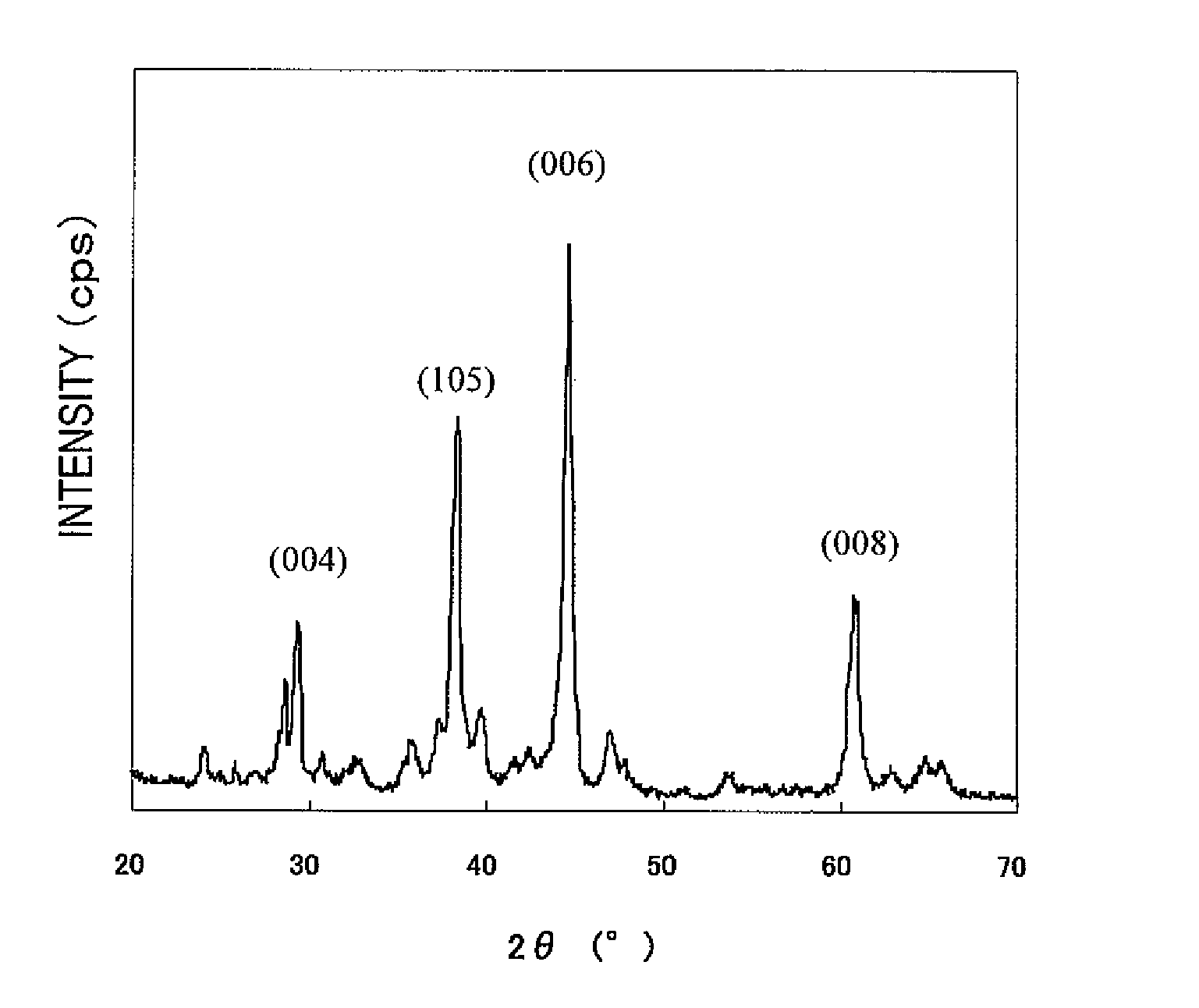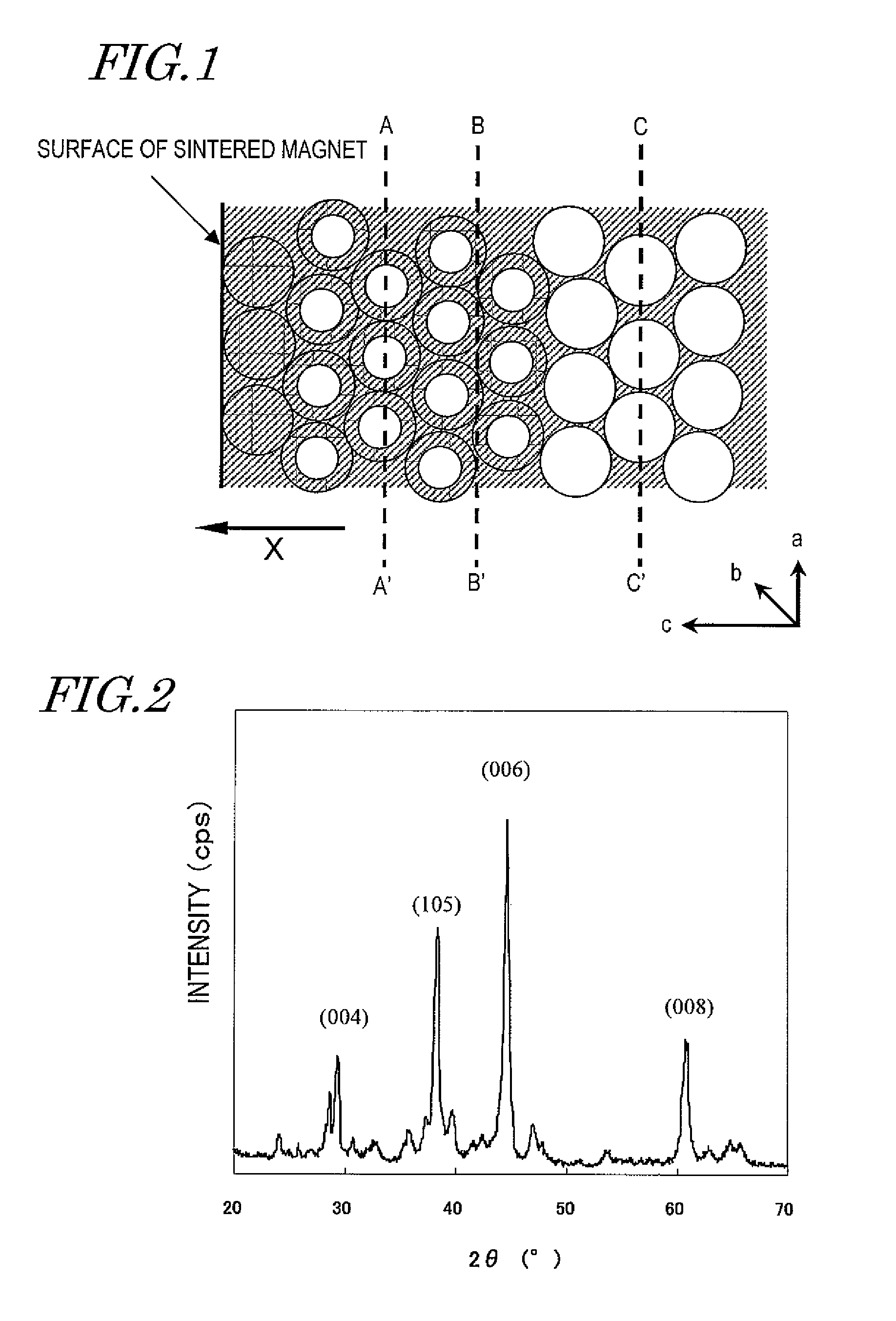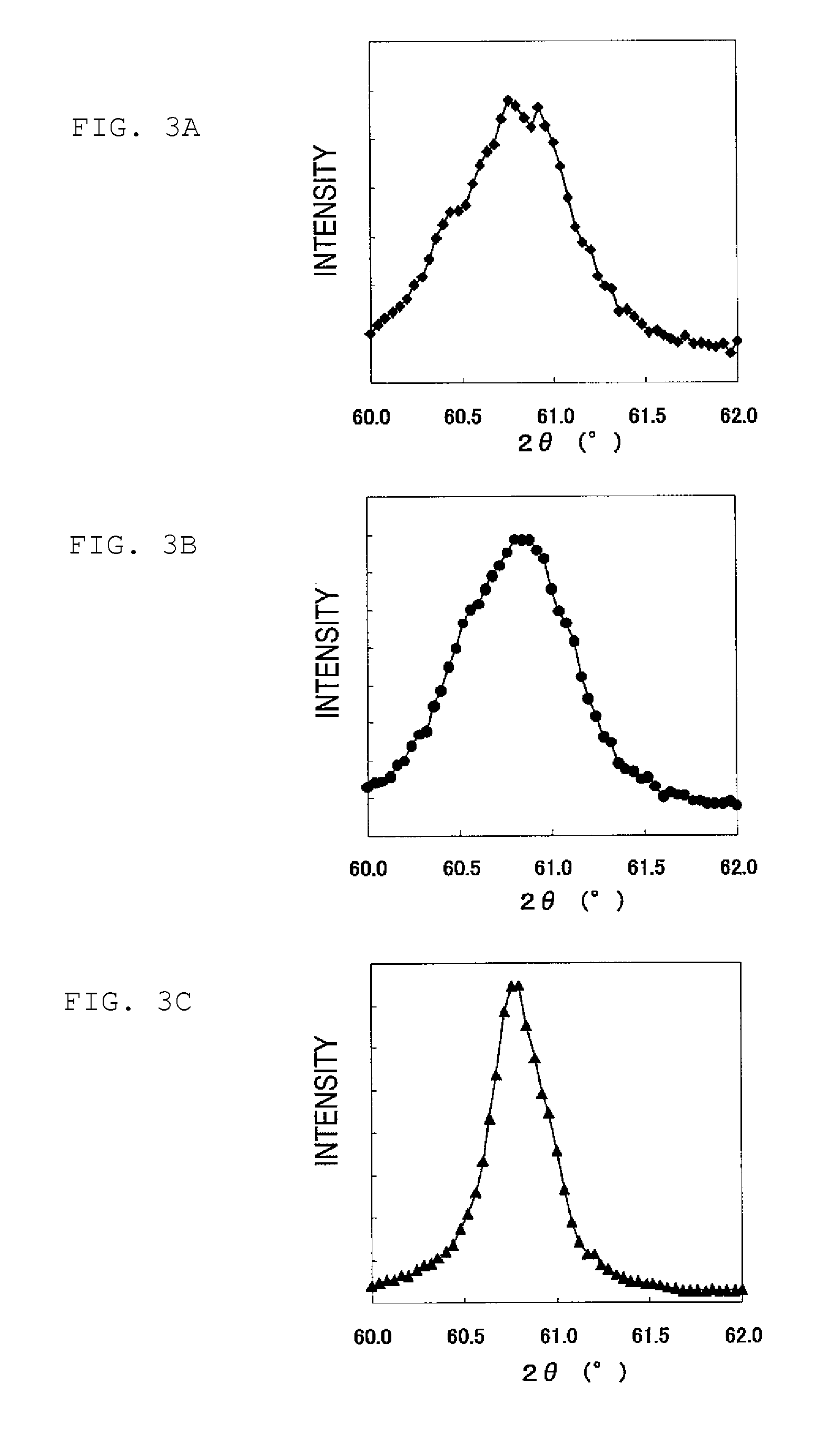R-Fe-B anisotropic sintered magnet
a sintered magnet and anisotropic technology, applied in the field of r-fe-b based anisotropic sintered magnets, can solve the problems of not being heated sufficiently by normal resistance heating process, not easy to obtain expected crystal structure, etc., and achieve the effects of reducing the remanence br, increasing the coercivity hcj, and increasing the anisotropy of magnetocrystalline anisotropy
- Summary
- Abstract
- Description
- Claims
- Application Information
AI Technical Summary
Benefits of technology
Problems solved by technology
Method used
Image
Examples
example 1
[0143]First, as shown in the following Table 1 (where the unit is mass %), thin alloy flakes having a composition including 0 to 10 mass % of Dy and an average thickness of 0.2 mm to 0.3 mm were made by strip casting process:
[0144]
TABLE 1AlloyNdDyBCoAlCuFea32.001.000.900.150.10bal.b29.52.5c27.05.0d24.57.5e22.010.0
[0145]Next, a vessel was loaded with those thin alloy flakes and then introduced into a hydrogen pulverizer, which was filled with a hydrogen gas atmosphere at a pressure of 500 kPa. In this manner, hydrogen was absorbed into the thin alloy flakes at room temperature and then desorbed. By performing such a hydrogen process, the thin alloy flakes were decrepitated to obtain a powder in indefinite shapes with a size of about 0.15 mm to about 0.2 mm.
[0146]Thereafter, 0.04 wt % of zinc stearate was added to the coarsely pulverized powder obtained by the hydrogen process and then the mixture was pulverized with a jet mill to obtain a fine powder with a size of approximately 3 μm...
example 2
[0164]First, thin alloy flakes g to i were made by strip casting process so as to have the compositions shown in the following Table 6 (where the unit is mass %) and an average thickness of 0.2 mm to 0.3 mm:
[0165]
TABLE 6AlloyNdPrDyTbBCoAlCuFeg26.06.0001.000.900.150.10bal.h21.06.05.00i21.06.005.0
[0166]Next, a vessel was loaded with those thin alloy flakes and then introduced into a hydrogen pulverizer, which was filled with a hydrogen gas atmosphere at a pressure of 500 kPa. In this manner, hydrogen was absorbed into the thin alloy flakes at room temperature and then desorbed. By performing such a hydrogen process, the thin alloy flakes were decrepitated to obtain a powder in indefinite shapes with a size of about 0.15 mm to about 0.2 mm.
[0167]Thereafter, 0.04 wt % of zinc stearate was added to the coarsely pulverized powder obtained by the hydrogen process and then the mixture was pulverized with a jet mill to obtain a fine powder with a powder particle size of approximately 3 μm.
[0...
example 3
[0175]First, alloy thin flakes j having a composition consisting of 32.0 mass % of Nd, 1.00 mass % of B, 0.9 mass % of Co, 0.1 mass % of Cu, 0.2 mass % of Al and Fe as the balance were made by strip casting process so as to have a thickness of 0.2 mm to 0.3 mm.
[0176]Next, a vessel was loaded with those thin alloy flakes and then introduced into a hydrogen pulverizer, which was filled with a hydrogen gas atmosphere at a pressure of 500 kPa. In this manner, hydrogen was absorbed into the thin alloy flakes at room temperature and then desorbed. By performing such a hydrogen process, the thin alloy flakes were decrepitated to obtain a powder in indefinite shapes with a size of about 0.15 mm to about 0.2 mm.
[0177]Thereafter, 0.04 wt % of zinc stearate was added to the coarsely pulverized powder obtained by the hydrogen process and then the mixture was pulverized with a jet mill to obtain a fine powder with a powder particle size of approximately 3 μm.
[0178]The fine powder thus obtained w...
PUM
| Property | Measurement | Unit |
|---|---|---|
| depth | aaaaa | aaaaa |
| 2θ | aaaaa | aaaaa |
| area | aaaaa | aaaaa |
Abstract
Description
Claims
Application Information
 Login to View More
Login to View More - R&D
- Intellectual Property
- Life Sciences
- Materials
- Tech Scout
- Unparalleled Data Quality
- Higher Quality Content
- 60% Fewer Hallucinations
Browse by: Latest US Patents, China's latest patents, Technical Efficacy Thesaurus, Application Domain, Technology Topic, Popular Technical Reports.
© 2025 PatSnap. All rights reserved.Legal|Privacy policy|Modern Slavery Act Transparency Statement|Sitemap|About US| Contact US: help@patsnap.com



